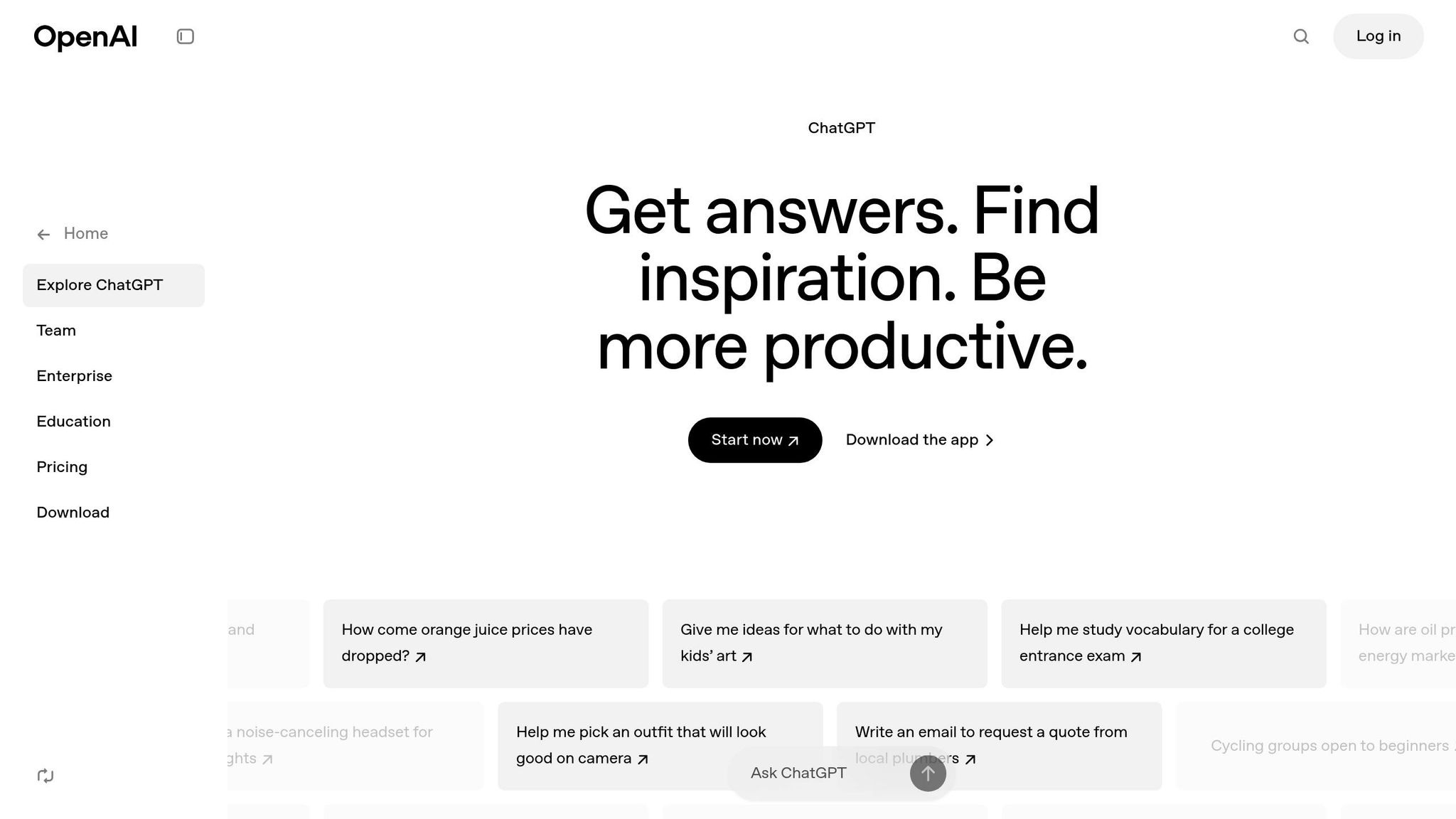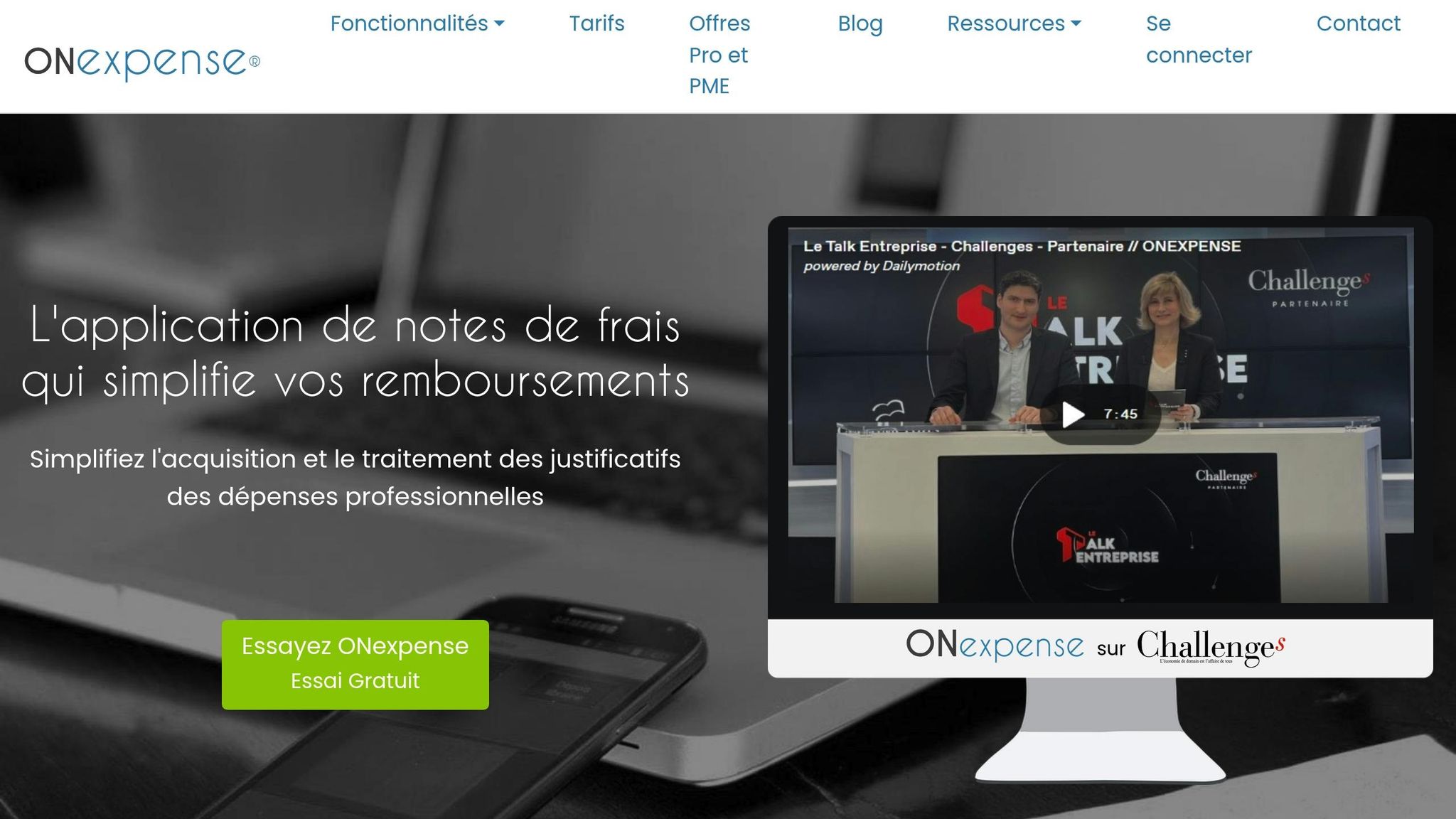
How to Automate Expense Management for SMEs
Automating expense management for SMEs helps reduce errors, save time, and ensure legal compliance. French SMEs spend an average of 330 hours per year on manual processes, with 20% errors in expense reports. Automation reduces these errors, cuts the cost per expense report from €58 to €10, and frees up thousands of hours each year.
Key points:
- 67% time savings through automation.
- Secure archiving compliant with French laws (GDPR, 6-year retention).
- Cost reduction of processing up to 78% per transaction.
- Smooth integration with accounting tools like Sage or Quadratus.
- Compliance with tax obligations (multi-VAT, mileage rates).
With tools like ONexpense, SMEs can centralize their data, improve financial transparency, and prepare for regulatory changes (mandatory electronic invoicing from 2027). Result: more time to focus on high-value activities.
Automate expense management for SMEs with ChatGPT, Make and Airtable

How to automate expense management in SMEs
To simplify and modernize expense management in an SME, automation is an effective solution. Here’s a practical guide to transform a manual process into an automated system that gains efficiency and accuracy.
Analyze your current expense management process
Before launching into automation, take time to examine your current process. Identify each step, from collecting receipts to validation and final reimbursement. Spot weak points: lost receipts, data entry errors, or delays in validations. By measuring the time needed for each step, you’ll have a clear baseline to evaluate possible improvements.
Define clear automation objectives
Once problems are identified, set precise and measurable goals. This can include better tax compliance or increased visibility on finances. For example, it’s proven that automation can reduce time spent on expense report processing by 67%. Determine key performance indicators to track concrete results and justify the investment.
Choose tools adapted to your needs
Technology choice is essential for project success. For French SMEs, certain aspects are unavoidable:
- Native multi-VAT management (20%, 10%, 5.5%, 2.1%),
- Automatic mileage calculations compliant with tax rates,
- Smooth integration with accounting software like SAGE or Quadratus,
- A mobile application using optical character recognition (OCR) to capture receipts in real-time.
A solution like ONexpense meets these criteria. This SaaS platform dedicated to French SMEs offers automated receipt processing through OCR, complete VAT management, mileage calculations compliant with regulations, and direct integration with main accounting tools.
Deploy and progressively test your solution
Once the tool is selected, adopt a progressive approach for deployment. Start with a pilot phase with a limited group of users. Test basic features like mobile receipt capture and automatic expense report generation. Once these first steps are mastered, you can activate more advanced options like custom validation workflows or complete accounting integration.
Team support is crucial to guarantee solution adoption. Train them from the start and implement regular feedback to adjust and improve the system based on real needs. With a structured approach, automation can transform expense management into a smooth and efficient process.
Centralize and secure expense data
Once expense processing is optimized, the next step is to centralize and secure associated data. This approach guarantees not only better organization but also strict compliance with current regulations.
Benefits of centralized data management
By grouping all financial information on a single platform, companies eliminate endless searches through scattered files. This centralization offers a real-time view of data, allowing decision-makers to rely on updated information to guide their strategic choices.
Moreover, the flexibility of a centralized solution allows supporting SME growth. For example, it becomes easy to add users, integrate new subsidiaries, or modify validation processes without having to change tools. This preserves both time and money while avoiding operational interruptions.
Another major asset: traceability. Each expense is recorded with its timestamp, geolocation, and receipt, creating a complete history. This facilitates cost analysis and budget adjustment while meeting financial audit requirements.
These technical features align perfectly with French regulations, which impose strict standards for data management.
Comply with legal obligations in France
In France, companies must respect rigorous rules, notably GDPR and the Data Protection Act. These texts impose secure digital archiving of receipts for at least six years, with probative value for tax audits.
Each operation must be traceable, as the National Commission for Information Technology and Civil Liberties (CNIL) can perform in-depth verifications. Sanctions for non-compliance are severe: up to €20 million or 4% of annual worldwide turnover. These financial risks make compliance essential.
In parallel, electronic invoicing will become mandatory: from September 2026 for large companies and September 2027 for SMEs. This involves working with an approved Partner Dematerialization Platform (PDP) and ensuring expense management systems support structured formats like Factur-X, UBL, or CII.
How ONexpense meets these requirements

ONexpense has integrated these legal constraints into its solution. The platform offers archiving compliant with French tax standards, with a six-year retention period and detailed audit trails. Sensitive data is protected by advanced encryption, and GDPR compliance is guaranteed through tools enabling consent management, as well as access, rectification, and deletion rights.
Security is also reinforced by mechanisms like multi-factor authentication and role-based access controls. For example, an employee can only view their own expense reports, while the CFO accesses an overview of company expense reports.
By relying on these features, companies can centralize their data efficiently while respecting legal standards. This allows them to secure their financial information and prepare for upcoming regulatory changes.
Essential features of an expense management tool
To effectively automate expense management, it’s crucial to choose a solution with key features. These tools must not only simplify processes but also guarantee regulatory compliance. Here are the technical elements to look for when making your selection.
Automated receipt processing through OCR
OCR (optical character recognition) is an essential technology for automatically extracting essential information from receipts. This includes data like amount, date, supplier, or VAT. By automating this task, human errors related to manual entry are considerably reduced. A good tool must be able to process variable-quality documents while maintaining a high level of accuracy.
Multi-VAT management and mileage calculation
A high-performing tool must be able to automatically adjust VAT rates according to local regulations and calculate mileage according to current tax rates. These often complex calculations are simplified through features like geolocation, which allows precise distance measurement and guarantees reimbursements compliant with French tax requirements.
Integration with accounting software
Integration with accounting systems is a real asset for improving administrative efficiency. A recent study reveals that 68% of users favor tools that integrate directly with their accounting software. This connection eliminates double entry, secures data transmission, and reduces repetitive tasks.
In France, small business managers spend less than half their time on their main activity, overwhelmed by administrative tasks. Tools capable of integrating with software like Sage, Quadratus, or Cegid, via reliable APIs, allow freeing up precious time while ensuring smooth data management.
Secure archiving and legal compliance
Keeping receipts for at least six years is a legal requirement in France. A good tool must guarantee secure archiving with advanced encryption and complete traceability. Granular access controls are also essential so each user can only view information relevant to their role.
ONexpense, for example, meets these requirements by integrating all these essential features. With efficient OCR processing, compatibility with main accounting software, and smooth multi-VAT management, the platform ensures considerable time savings while guaranteeing total compliance with French tax regulations.
sbb-itb-2d04787
Conclusion: The advantages of expense management automation for SMEs
Expense management automation constitutes a major asset for French SMEs, both in terms of growth and competitiveness. The numbers speak for themselves: 30% reduction in processing costs, 65% decrease in errors, and 50% faster approval processing. For example, an employee spends an average of 20 minutes filling out an expense report manually. With automation, this time can be reinvested in more strategic tasks.
But benefits don’t stop there. Manual expense reports, which contain 19% errors and generate a cost of €52 per correction, become a thing of the past. For SME managers, often overwhelmed by administrative responsibilities, this transformation represents an opportunity to refocus on their main activity.
Solutions like ONexpense offer a range of features adapted to French SME needs. These tools not only allow saving up to 4,000 hours per year but also reduce reimbursement processing costs by 78% per transaction.
In addition to operational gains, automation gives SMEs back their agility in the face of market changes. By eliminating repetitive tasks and reducing error margins, teams can fully dedicate themselves to innovation and commercial development.
In a demanding economic context, SMEs that delay adopting these tools risk losing competitiveness. With solutions like ONexpense, accessible from €3.4 excluding VAT per month, return on investment is quick, thanks to savings made and time freed for high-value activities.
What are the key benefits of automating expense management for an SME?
Expense management automation: an asset for SMEs
Automating expense management offers a series of concrete advantages for small and medium enterprises. First, it allows cost savings by reducing human errors and simplifying administrative processes. In parallel, transactions become more fast and precise, making financial tracking much smoother and more reliable.
Repetitive and time-consuming tasks, like receipt entry or expense report creation, are handled automatically. Result? Teams recover precious time they can invest in strategic projects or high-value activities.
In addition to these time and efficiency gains, automation offers increased financial visibility. This transparency is a major asset for making informed decisions and driving company growth with more serenity.
How to choose an expense management automation tool compliant with French legislation?
How to choose an expense management automation tool in France?
To choose an expense management automation tool that respects French legal requirements, it's essential to verify it complies with main regulations, notably:
- GDPR (General Data Protection Regulation): Ensure the tool protects personal data confidentiality.
- Tax compliance: The tool must enable precise VAT management and guarantee receipt conservation according to French standards.
- Secure archiving obligations: These are essential to meet legal requirements for document conservation.
In addition to these criteria, a good tool must include features like traceability, risk management, and enhanced security to protect your sensitive data. Finally, favor a solution that's easy to use and compatible with your current accounting software for smooth integration into your administrative processes.
What are the key steps to automate expense management in an SME?
How to automate expense management in an SME?
To simplify and automate expense management in an SME, start by evaluating your current processes. Identify frequent obstacles, like manual entry errors or validation delays. Then, set concrete objectives: for example, reduce processing times or guarantee better compliance with internal rules.
Once this analysis is completed, select a tool that precisely meets your needs. Choose a solution capable of easily managing receipts, automating expense report creation, and integrating with your existing accounting software. Team support is essential: train your collaborators for a smooth transition and configure automated approval workflows to accelerate processes.
By following these steps, you can minimize errors, optimize processing time, and strengthen expense control while staying aligned with your company's internal policies.
